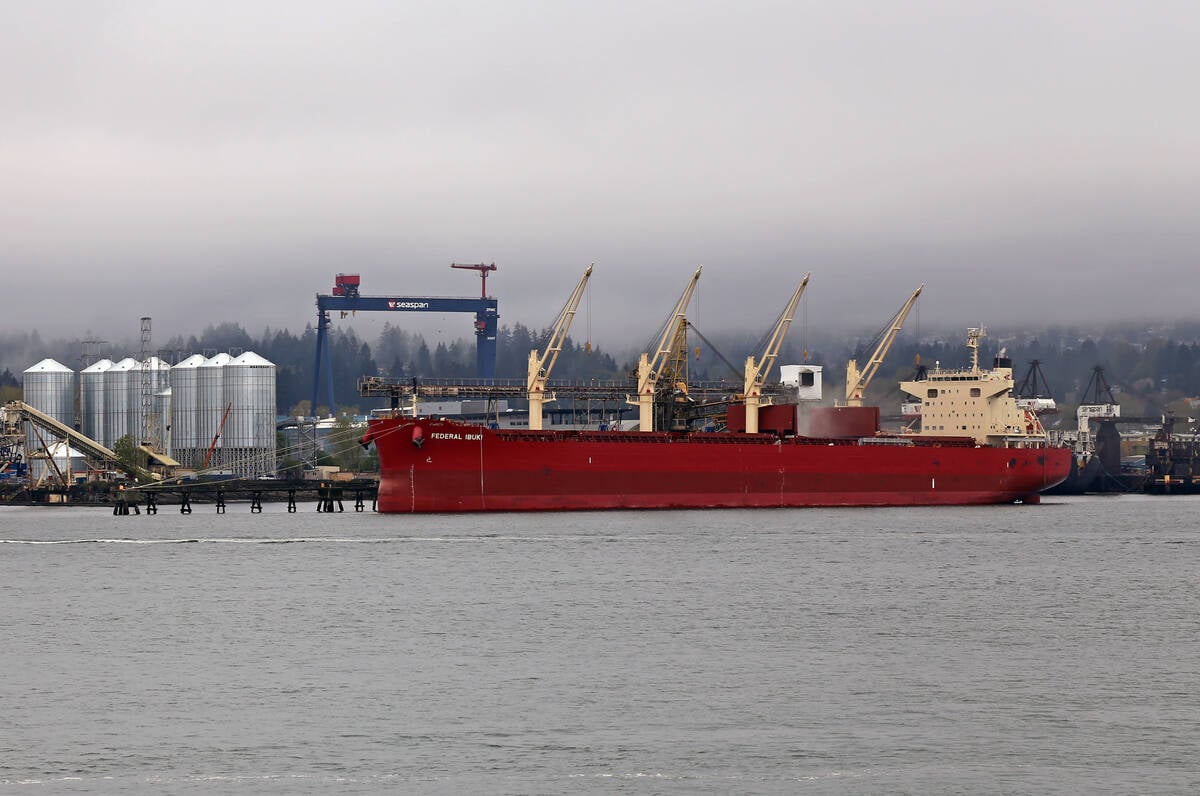In what may be one of his last major policy announcements as federal agriculture minister, Lyle Vanclief has unveiled $120 million in cull cow compensation that has one thing in common with many other programs he has announced over six years – most provinces and the farmers it is designed for don’t like it.
On Nov. 21, Vanclief said as many as 560,000 cull cattle slaughtered between Sept. 1, 2003, and Dec. 31, 2004, could be eligible for $159 when slaughtered, plus up to $161 in $1-a-day feeding compensation if they are not slaughtered before May 24, 2004.
Read Also

Vancouver port says it has improved efficiency
Grain movement has been strong at the Port of Vancouver due in part to a new centralized scheduling system.
If provinces do not contribute their 40 percent, Ottawa still will pay its 60 percent. A federal-only program in a province would produce payments of $95.40 per head plus 60 cents per eligible day in feed.
“I’m confident this cull animal program will be a big help,” Vanclief told a news conference three weeks to the day before a new Liberal government, and possibly a new agriculture minister, take the stage Dec. 12.
Almost immediately, the chorus of boos started, focusing mainly on the requirement the culls must be slaughtered before compensation is paid.
“This is not what we wanted and we are very disappointed,” said Canadian Cattlemen’s Association president Neil Jahnke.
“You are taking marketing decisions out of the hands of producers and putting them in the hands of a program and that doesn’t work.”
British Columbia Cattlemen’s Association general manager David Borth predicted many producers won’t even bother applying.
There were predictions that buyers would lower the price they pay for culls, allowing taxpayers to pick up the difference and Vanclief conceded there was little he could do to stop it.
Alberta immediately condemned the program as inadequate and unveiled its own that does not require slaughter.
Ontario also refused to commit to Ottawa’s plan and minister Steve Peters is asking for industry opinion over the next month before deciding whether the province will join or go it alone.
Saskatchewan ag minister Clay Serby initially said he would join the federal plan but on Nov. 24 said the province may follow Alberta with a program that does not require slaughter.
Even provinces that do not join will be expected to administer the federal program, Agriculture Canada official John Ross said in Ottawa.
There were criticisms that producers in many provinces will not be able to find slaughter plants to take their cattle and make them eligible for a payment.
In Alberta, Cargill Food said the company will not buy cull cattle. Tyson Foods said it will continue to slaughter cull cattle at its Lakeside plant in Brooks and pay a fair price.
The most favourable reaction came from the Canadian Federation of Agriculture, which called the program flawed but “a step in the right direction.”
It also will provide compensation to other ruminants like sheep and goats, but details have not been worked out.
















